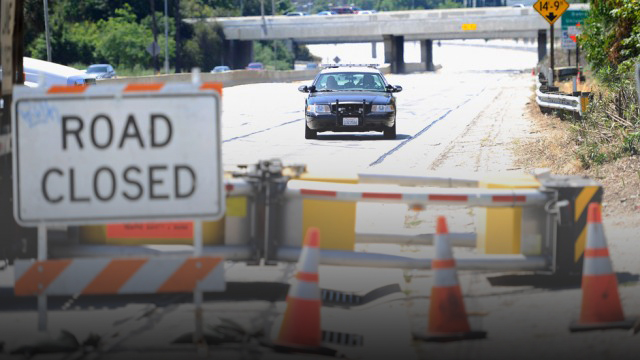by Randal O’Toole
President Trump has proposed to stop funding new New Starts projects. New Starts, along with its subsidiary program Small Starts, is a multi-billion-dollar fund created by Congress, and funneled through the Federal Transit Administration (FTA), that gives cities incentives to build the most expensive transit systems possible so they can get “their share” of the “free” federal dollars.
Congress should agree to this proposal, which would encourage local transit agencies to focus on efficient, adaptable busways rather than expensive inflexible rail lines.
In 2004, Denver-area voters approved the construction of six new rail lines and a bus-rapid transit line. Thirteen years later, several of those lines have opened and the results are in: bus-rapid transit is far superior to any of the rail lines.
At average speeds of 41 miles per hour, including stops, the Denver-Boulder bus line is faster than any of the trains. Known as the Flatiron Flyer, it was built at the lowest cost per mile and with the smallest cost overrun.
It is wildly popular, attracting 30 percent more riders than expected and boosting corridor ridership by 45 percent, while some of the rail lines are carrying 40 percent fewer riders than expected. The Flatiron line is so popular, in fact, that the regional transit agency is scrambling to find enough bus drivers to meet demand.
Best of all, unlike the trains, the bus line actually relieves congestion as the new highway lanes built for the buses are open to other vehicles willing to pay a toll. The tolls vary so that the lanes never become congested, allowing the buses to meet their schedules even during the busiest rush hours.
This is just one more reason for the federal government to stop encouraging cities to build wildly expensive rail lines when buses can carry more people, faster, safer, and for far less money. A mile of well-designed busway, such as those found in Curitiba, Brazil and Istanbul, Turkey, can move as many people per hour as a mile of the Washington Metro rail system, and at least three times as many people per hour as most light-rail miles.
Yet Maryland wants to build the Purple light-rail line; Minneapolis wants to build the Southwest Line; and Los Angeles, Phoenix, and Seattle are all going on light-rail spending sprees. Most of these lines are projected to cost well over $100 million per mile, compared with $10 million per mile for a four-lane freeway (exclusive of right of way), yet none will carry as many people as half of a freeway lane.
Unlike the Washington Metro, which is separated from pedestrians and cars, light rail often operates in streets and has a history of killing three to four times as many people, per billion passenger miles carried, as buses. Rail’s high costs and inflexibility explain why more than a thousand American cities replaced streetcars with buses between 1910 and 1970.
Thanks to New Starts, Dallas has built more than 100 miles of light rail, yet hardly anyone rides it. Five billion dollars later, the share of Dallas-Ft. Worth commuters taking transit to work has declined from 2.7 percent before they began building light rail to 1.8 percent today.
Thanks to New Starts, Honolulu is building a stupidly expensive—and supremely ugly—elevated rail line. Like the Washington Metro, it will be completely separated from traffic, but will have no more capacity to move people than a light-rail line—which means about a third of the capacity of a bus line.
Thanks to New Starts’ little brother, Small Starts, Atlanta, Baton Rouge, Fort Lauderdale, Los Angeles, Portland, Sacramento, Seattle, Tempe, and Washington are among the many cities planning, building, or planning to extend ridiculous streetcar lines that clog up busy streets and carry few riders. Advocates claim streetcars stimulate urban redevelopment, but the reality is that nearly all of the redevelopment along streetcar lines has received other subsidies, usually through tax-increment financing.
The only beneficiaries of most New Starts/Small Starts projects are the engineering firms that plan these lines, the construction firms that build them, and the manufacturers that make huge profits building railcars that cost many times more than buses. Transit riders lose because the rail lines often offer poorer service than buses, and as has been the case in Denver, actually result in the elimination of existing bus routes. Other urban dwellers lose because light-rail and streetcar lines actually increase congestion.
Ending New Starts would save both federal and local taxpayers billions of dollars a year, plus relieve local governments of the obligations to operate and maintain obsolete transit lines that should never have been built in the first place.
This article originally appeared in The Hill, May 2, 2017.








